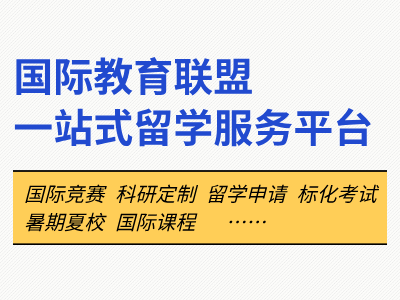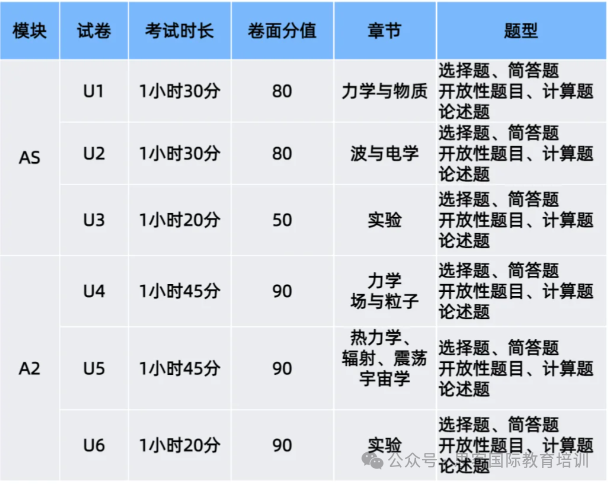Scroll up for the English version
过去的三年对学校、教师和学生来说都充满了挑战。这三年里,我们资质证书的标准也发生了变化。
2020年6月和11月考季
2020年6月考季,所有考试取消。与其他考试局一样,我们使用了教师给出的评估成绩。这些成绩与实际考试相比,更为慷慨。
2020年11月考季,考试得以恢复。为了不让11月考季的考生与6月考季的考生相比处于劣势地位,我们根据当年6月考季的教师评估成绩进行的成绩评定。
2021年6月和11月考季
2021年6月和11月考季,在大多数国家和地区,考试得以顺利进行,我们在无法考试的国家和地区采用了学校评估。考试的成绩评定标准与更为慷慨的学校评估保持一致,因此无论是参加考试还是学校评估,所有考生均依照同一标准获得成绩。
2022年6月和11月考季
2022年6月和11月考季,大多数国家和地区进行了考试。在一些无法考试的地区,我们采用了学习证据集作为应急方案。学习证据集由我们进行评分和等级评定,考试和学习证据集使用了相同的评定标准。
与大多数其他考试局一样,我们的成绩评定标准开始调整回2019年疫情之前的情况。2022年采用的成绩评定标准大约在2019年(疫情之前)与2021年的中间。因此,2022年标志着,成绩评定标准回归到了疫情之前标准的中间点
2023年6月和11月考季成绩相较以往如何?
2022年,我们制定的标准处于2019年与2021年的中间点。这意味着我们在2022年给出的成绩比2019年6月考季给出的成绩更慷慨,比2021年6月考季给出的成绩标准更高。
2023年的成绩评定标准将回归到2019年的水平。与此同时,也需要理解以下几点。
与前一年相比,有两种不同的方式来保持标准:
方式1、需要达到同样的表现才能获得同样的等级
方式2、确保能力水平相近的考生获得类似的等级分布
通常,使用这两种方法会是同一种结果,并没有任何区别。但是,当学习受到干扰时,第二种方法比第一种方法更慷慨。
为了保护学生免受疫情对学习造成的影响,我们将采取第二种更为慷慨的方法回归到2019年的标准。这就意味着,我们不会让学习受到干扰的2023年考生处于不利地位。
我们知道这些考生,如果是在2019年学习没有受到干扰的情况下参加考试,表现可能会更好。因此,我们希望确保这些考生今年的成绩与2019年的成绩相当。为了做到这点,当我们设定等级分数线(grade thresholds)时,会仔细查看2019年以及之前几年考生的成绩。
总体来说,2023年我们设定的等级分数线(grade thresholds)会高于2021和2022年的分数线,而更接近2019年的分数线。但是,也不是所有情况都是如此。等级分数线每年都会有变化,以此反映试卷的难度差异。尽管2023年的标准已经恢复到2019年,但是可能会由于试卷难度,造成等级分数线低于2022年。
这就意味着,如果你用2021年或者2022年的试卷作为模考试卷,这些试卷的分数线可能会更低,这反映了这些年我们制定了更为宽松的标准。如果你是使用模考结果来给出2023年考生预估成绩,就需要记住这一点。
这个方法对个体中心的影响如何?
需要强调的是,这里谈论的是剑桥中心作为一个群体的全球平均标准。如果某个中心本届考生更强,那么该中心的成绩也会比2019年更好;这个中心本届考生更弱,则成绩也会低于2019年。对大多数中心来说,与2019年相比,获得A或者更高等级的考生比例并不完全相同,某些情况下,可能会大不相同。
获得每个等级的学生数量并没有设定的固定数字或者“上限”。
剑桥国际资质证书的评定标准是否与英格兰本土的资质证书相同?
我们资质证书的标准与英格兰同类资质证书的标准保持一致,因此剑桥国际的考生不会因为获得我们的资质证书而不是英国本土考试局的资质证书而处于优势或劣势。Ofqual(英格兰资格与考试监督管理办公室)发表了这篇文章,解释了他们计划在2023年6月采用的成绩评定方法:
https://www.gov.uk/government/speeches/grading-exams-and-assessments-in-summer-2023-and-autumn-2022
了解我们如何打分以及评定成绩:https://www.cambridgeinternational.org/exam-administration/results/marking-and-grading/index.aspx
Background
The past three years have been challenging for schools, teachers and learners. During these years, there have been changes to the standards of our qualifications.
In June 2020 all exams were cancelled and, in common with other exam boards, we issued grades recommended by teachers. These grades were more generous than would have been the case if exams had taken place.
In November 2020 we ran exams once again. We awarded grades based on the more generous standard of the teacher assessments in June 2020 so that our November candidates were not at a disadvantage compared to our June candidates.
In June and November 2021 we were able to run exams in most countries, but we issued school-assessed grades in places where exams could not take place. We aligned our exam grades to the more generous standard of school-assessed grades so that all candidates were awarded grades based on the same standard, regardless of whether they had taken exams or not.
In June and November 2022 we continued to run exams in most countries. In places where exams could not take place, we provided Portfolio of Evidence as a contingency measure. Portfolio of Evidence is marked and graded by us, and we set the same awarding standard for both exams and Portfolio of Evidence.
In 2022, in common with most other exam boards, we began to move our awarding standard back towards the pre-Covid standards of 2019 and before. The standard we adopted in 2022 was approximately half way between the pre-Covid standard of 2019 and the more generous standard of 2021. So 2022 marked the halfway point in our return to pre-Covid standards.
How will June and November 2023 grades compare with previous years?
In 2022, the standard that we set was at the midpoint between 2019 and 2021. This meant that the grades we awarded in 2022 were more generous than those awarded in June 2019, and less generous than those awarded in June 2021.
The standard of exams in 2023 will return to the standard of exams in 2019. However, it is important to understand what we mean by this.
There are two different ways to maintain the standard from a previous year:
- the first is to require the same level of performance to obtain the same grade;
- the second is to make sure that comparable groups of candidates get comparable distributions of grades.
Usually, these two approaches lead to the same outcome, and it makes no difference which one we use. However, in a situation where there has been widespread disruption to learning, the second approach is more generous than the first.
To protect students against the impact of disruption to learning caused by the Covid pandemic, we will take the second (and more generous) approach to carrying forward the 2019 standard. This means we will avoid disadvantaging students who
- have taken exams in 2023, and- who have experienced disruption to their learning.
We know these students might have performed better if they had taken the exams in 2019, when they did not experience as much disruption to their learning. We want to make sure the grades those students receive this year are comparable to the grades they would have received in 2019. We do this by looking carefully at the results of candidates in 2019 and in the years before that when we set grade thresholds.
In general, the grade thresholds we choose in 2023 will be higher than the grade thresholds we chose in 2021 or 2022, and closer to 2019. However, this might not always be the case. Grade thresholds can change each year to reflect any differences in the difficulty of the question papers. In 2023 it is possible that grade thresholds could be lower than in 2022, because of a more difficult question paper, even though we have returned to the standard of exams in 2019.
This means that if you have used 2021 or 2022 past papers as mock exams for your students, the grade thresholds set for those papers are likely to be lower, reflecting the fact that we set a more generous standard in these years. You should remember this if you are using the results from mock exams to inform your forecast grades for students being examined in 2023.
How will this approach affect individual centres?
It is important to note that we are talking about global averages – standards for Cambridge centres as a group. Grades at an individual centre could be better than in 2019 if the cohort at that centre is stronger; or lower than in 2019 if the cohort at that centre is weaker. For most centres the percentage of candidates awarded a grade A or higher will not be exactly the same as the centre’s 2019 percentage and, in some cases, it may be significantly different.
There is no set number, or ‘cap’, on the number of students who can achieve each grade.
Will Cambridge International qualifications have the same awarding standard as qualifications in England?
We align the standard of our qualifications to the standard of similar qualifications in England, so Cambridge International candidates will not be advantaged or disadvantaged by taking our qualifications rather than qualifications from the main exam boards in England. Ofqual have produced this article where they explain their planned approach to grading in June 2023:
https://www.gov.uk/government/speeches/grading-exams-and-assessments-in-summer-2023-and-autumn-2022
Find out how we mark and grade exams:
https://www.cambridgeinternational.org/exam-administration/results/marking-and-grading/index.aspx











